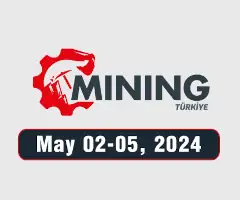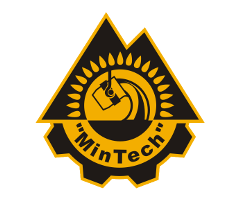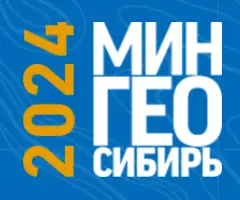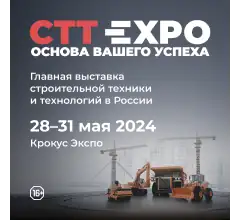The need for and scope of application of stainless steel rock bolts
![]() B.B. Lugancev1, A.I. Chavkin1, Ju.V. Turuk2, E.Yu. Voronova2, V.S. Isakov3
B.B. Lugancev1, A.I. Chavkin1, Ju.V. Turuk2, E.Yu. Voronova2, V.S. Isakov3
1 LLC Shakhty Research and design and engineering Coal Institute, Shakhty, Russian Federation
2 Shakhty Institute (branch) of South Russian State Polytechnic University (NPI) named after M.I. Platov, Shakhty, Russian Federation
3 South Russian State Polytechnic University (NPI) named after M.I. Platov, Novocherkassk, Russian Federation
Russian Mining Industry №1 / 2024 стр. 94-98
Abstract: Corrosion wear of the rock bolt elements with loss of their bearing capacity is sometimes observed in operation of the rock bolt support. Studies carried out in the mine workings secured with resin grouted rebar bolts allowed us to determine the patterns of corrosion wear of the rock bolt elements and measures to prevent it. Development of the rock bolt element corrosion is observed when they are moistened. The probability of free water content in the roof rocks increases with the growth of rock fracturing. The rate of the corrosion process increases with a decrease in the hydrogen index of water. Analysis of possible ways to prevent rock bolt support failures caused by the corrosion wear revealed that the most economical of them is the application of anti-corrosion coatings on the rock bolt support elements. Technical requirements were developed for the means of anti-corrosion protection of the metal rock bolt supports, they were selected among the anti-corrosion means available in the market of the Russian Federation, and their mine tests were carried out as the anti-corrosion coatings of the rock bolts in the most aggressive mine environment. According to the results of the mine tests, one anti-corrosion medium was identified that successfully passed the tests. The anti-corrosion coating created with this medium did not fail, corrosion failure of the rock bolt support elements was not observed. According to the test results, it was concluded that the anti-corrosion coating can prevent the failure of the rock bolt support operation. The field of application for stainless rock bolts is mine workings with long service life of the rock bolt support when the roof rocks are saturated water which pH < 7. The economic effect of using the rock bolts with anti-corrosion coating would amount to 6.6 million rubles/km. On average, only 4.2% of the rock bolts supplied to mines should have an anti-corrosion coating. It is possible to predict the need for the use of stainless rock bolts before driving the mine working, which will allow determining the necessary volume of their purchase in advance.
Keywords: stainless steel rock bolt, corrosion wear, corrosion rate, rock fracturing, water cut, pH, anti-corrosion coating
For citation: Lugancev B.B., Chavkin A.I., Turuk Ju.V., Voronova E.Yu., Isakov V.S. The need for and scope of application of stainless steel rock bolts. Russian Mining Industry. 2024;(1):94–98. (In Russ.) https://doi.org/10.30686/1609-9192-2024-1-94-98
Article info
Received: 25.11.2023
Revised: 11.01.2024
Accepted: 16.01.2024
Information about the authors
Boris B. Lugancev – Dr. Sci. (Eng.), Professor, Full Member of Academy Mining Sciences, Chairman of the Board of Directors, LLC Shakhty Research and Design and Engineering Coal Institute (LLC Shakhtniui), Shakhty, Russian Federation
Aleksandr I. Chavkin – Cand. Sci. (Eng.), Head of Laboratory, LLC Shakhty Research and design and engineering Coal Institute (LLC Shakhtniui), Shakhty, Russian Federation; e-mail: This email address is being protected from spambots. You need JavaScript enabled to view it.
Jurij V. Turuk – Dr. Sci. (Eng.), Professor, Shakhty Institute (branch) of South Russian State Polytechnic University (NPI) named after M.I. Platov, Shakhty, Russian Federation
Eleonora Yu. Voronova – Dr. Sci. (Eng.), Associate Professor, Head of the Department, Shakhty Institute (branch) of South Russian State Polytechnic University (NPI) named after M.I. Platov, Shakhty, Russian Federation
Vladimir S. Isakov – Dr. Sci. (Eng.), Professor, Head of the Department, South Russian State Polytechnic University (NPI) named after M.I. Platov, Novocherkassk, Russian Federation
References
1. Чавкин А.И. Причины, динамика коррозионного износа и прогноз срока службы анкерной крепи в условиях коррозионно-активной среды. Уголь. 2004;(3):15–16. Chavkin A.I. Reasons, dynamics corrosion wearing and prognosis of longleaf anker support for saving of heading and tunneling. Ugol’. 2004;(3):15–16. (In Russ.)
2. Чавкин А.И. Обеспечение проектных сроков эксплуатации анкерных металлических крепей. Горный информационно-аналитический бюллетень. 2008;(12):327–332. Режим доступа: https://www.giab-online.ru/files/Data/2008/12/3_CHavkin.pdf (дата обращения: 03.12.2023). Chavkin A.I. Ensuring the design life of metal roof bolting supports. Mining Informational and Analytical Bulletin. 2008;(12):327–332. (In Russ.) Available at: https://www.giab-online.ru/files/Data/2008/12/3_CHavkin.pdf (accessed: 03.12.2023).
3. Федотов С.Д., Улыбин А.В., Шабров Н.Н. О методике определения коррозионного износа стальных конструкций. Инженерно-строительный журнал. 2013;(1):12–20. https://doi.org/10.5862/MCE.36.2 Fedotov S.D., Ulybin A.V., Shabrov N.N. The methodology of determining the corrosion of steel structures. Magazine of Civil Engineering. 2013;(1):12–20. (In Russ.) https://doi.org/10.5862/MCE.36.2
4. Mubarak G., Elkhodbia M., Gadala I., AlFantazi A., Barsoum I. Failure analysis, corrosion rate prediction, and integrity assessment of J55 downhole tubing in ultra-deep gas and condensate well. Engineering Failure Analysis. 2023;151:107381. https://doi.org/10.1016/j.engfailanal.2023.107381
5. Mohammed H.K., Jafar S.A., Humadi J.I., Sehgal S., Saxena K.K., Abdullah G.H., Saeed L.I., Salman M.S., Abdullah W.S. Investigation of carbon steel corrosion rate in different acidic environments. In: Materials Today: Proceedings. 2023. https://doi.org/10.1016/j.matpr.2023.03.792
6. De-León-Escobedo D. Risk-based maintenance time for oil and gas steel pipelines under corrosion including uncertainty on the corrosion rate and consequence-based target reliability. International Journal of Pressure Vessels and Piping. 2023;203:104927. https://doi.org/10.1016/j.ijpvp.2023.104927
7. Andrade C. Steel corrosion rates in concrete in contact to sea water. Cement and Concrete Research. 2023;165:107085. https://doi.org/10.1016/j.cemconres.2022.107085
8. Li A.-J., Wen H.-C., Batistuta V.H., Cheng S.-H. Influence of ground anchors corrosion and uncertainty strength parameters: A case study slope failure in northern Taiwan. Soils and Foundations. 2023;63(3):101316. https://doi.org/10.1016/j.sandf.2023.101316
9. Wang Y., Sun X., Ren A. Investigations of rock anchor corrosion and its influence factors by exhumations in four typical field sites. Engineering Failure Analysis. 2019;101:357–382. https://doi.org/10.1016/j.engfailanal.2019.03.022
10. Lin N., Zhang H., Zou J., Han P., Ma Y., Tang B. Improvements in Wear and Corrosion Resistance of RB400 Anchor Rod Steel by Electroless Ni-P Plating. International Journal of Electrochemical Science. 2015;10(1):356–372. https://doi.org/10.1016/S1452-3981(23)04998-2
11. Chen Z., Jin Y., Yin X., Chen Y., Liu Y., Ying H., Yang W. Self-doped poly(aniline-co-metanilic acid) copolymer coatings for enhancing the corrosion resistance of 304 stainless steel. Thin Solid Films. 2022;761:139524. https://doi.org/10.1016/j.tsf.2022.139524
12. Muciaccia G., Khorasani M., Mostofinejad D. Effect of different parameters on the performance of FRP anchors in combination with EBR-FRP strengthening systems: A review. Construction and Building Materials. 2022;354:129181. https://doi.org/10.1016/j.conbuildmat.2022.129181





